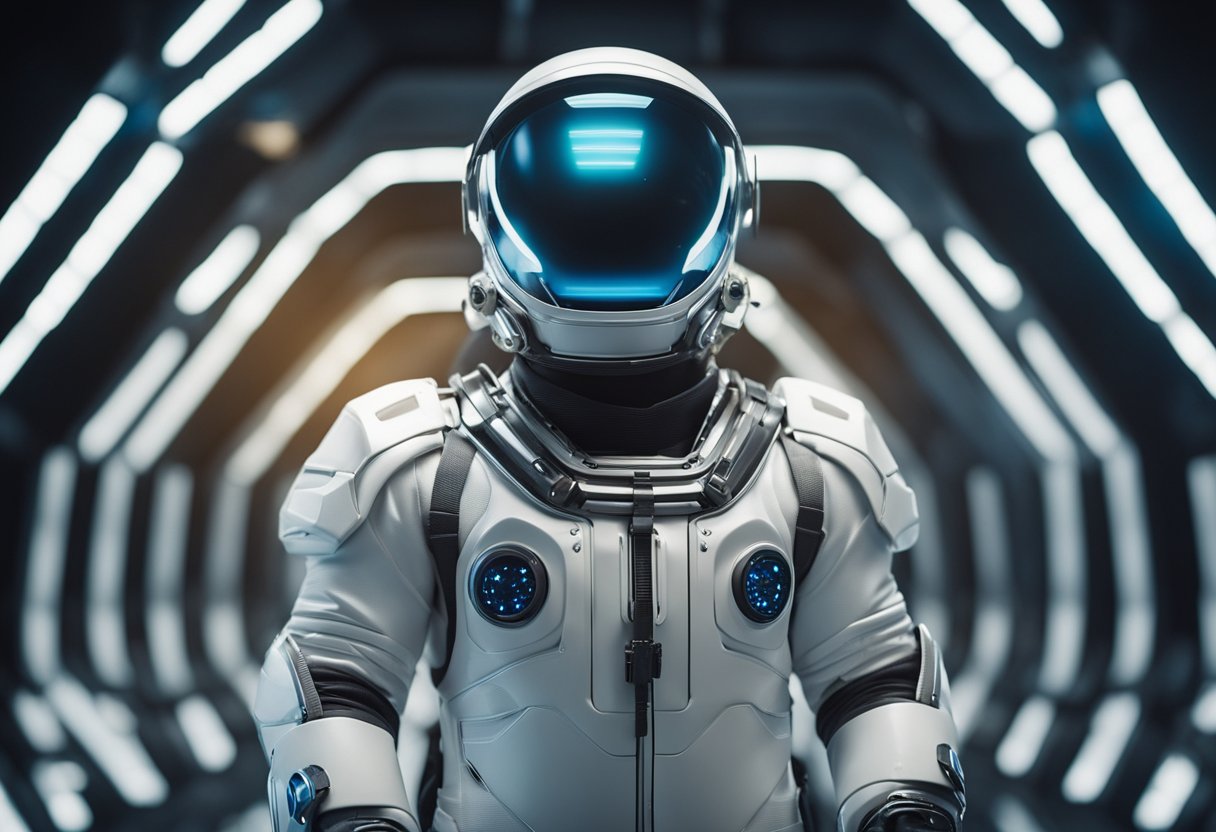
Space Suit Technological Advances – The evolution of space suits has been a critical factor in the success of manned missions beyond Earth. They serve not only as a symbol of human exploration but as a lifeline that enables astronauts to survive and work in the harsh environment of space. From their inception in the late 1950s, space suits have undergone continual improvement to meet the changing demands of space travel. As we stand on the cusp of a new era of space exploration, driven by both governmental space agencies and private sector initiatives, the need for advanced space suit technologies has never been greater.
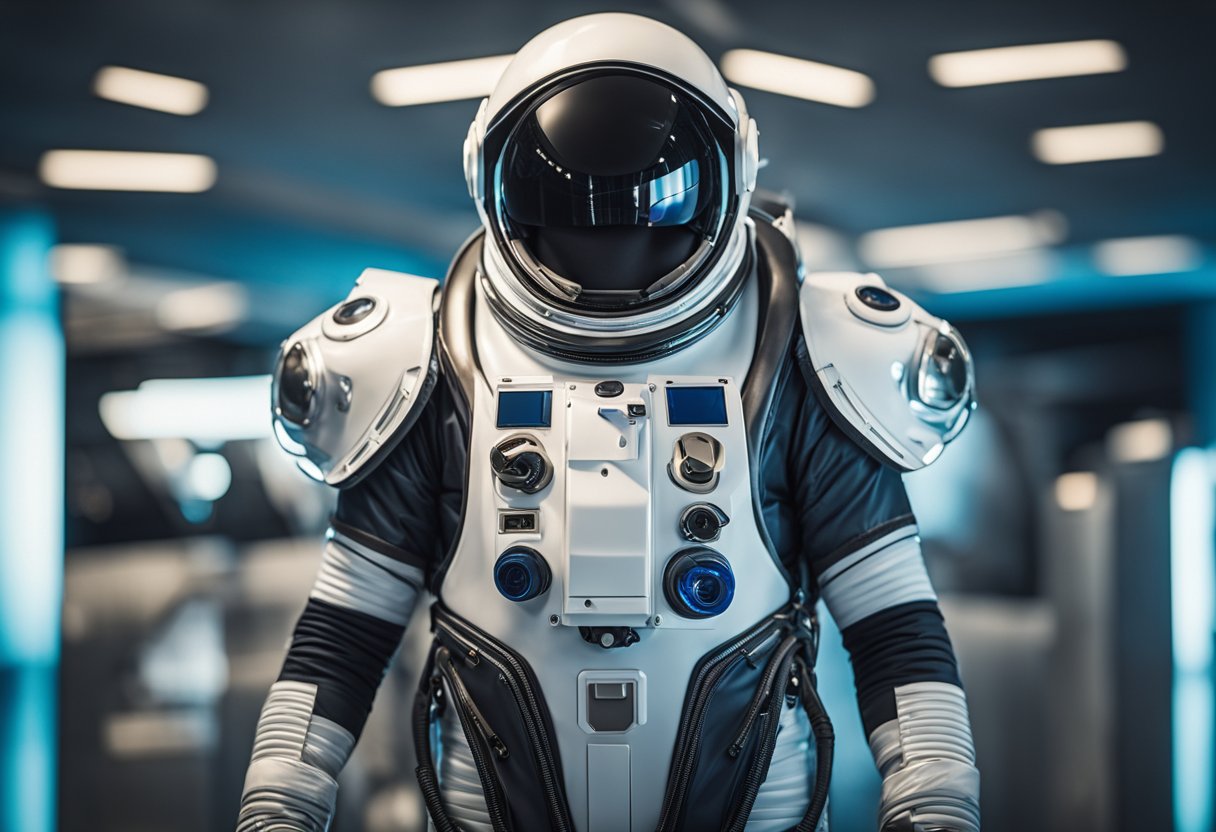
Our continued journey into space hinges on the adaptability and innovation in space suit design. The complexity of modern missions demands suits that provide life support, enhanced mobility in microgravity, and protection against space-specific hazards such as micro-meteoroids and radiation. These suits must also cater to an increasingly diverse range of activities, from spacewalks in low Earth orbit to the prospects of moonwalks or eventual Martian exploration. With the burgeoning scene of space tourism, represented by platforms like SpaceVoyageVentures.com, even civilians are turning their gaze towards the stars, further expanding the scope of space suit technology.
The journey of space suits began with early spacesuits that were essentially full-pressure suits originally designed for high-altitude aviation. The first landmark in space suit design was for Yuri Gagarin’s historic flight in 1961, followed by the suit for the first spacewalk by Alexey Leonov in 1965. The Soviet Union played a pivotal role in these formative years, developing suits that enabled humans to survive the harsh environment of space.
During the Apollo missions, specifically Apollo 11 in 1969, space suit technology took a giant leap forward. Neil Armstrong and Buzz Aldrin donned space suits that allowed them to walk on the moon. The A7L Apollo suit provided life support and protection against micrometeoroids, solar radiation, and extreme temperature variations.
The space shuttle era then saw the introduction of the Extravehicular Mobility Unit (EMU), a more advanced suit to facilitate shuttle astronauts during spacewalks. The EMU suits were more flexible, had longer life support, and were modular, allowing for parts replacement in space.
| Era | Space Suit | Notable Feature |
|---|---|---|
| Early Soviet | SK-1, Berkut | First walk, portable life support |
| Apollo | A7L Apollo Suit | Moonwalk capable, thermal control |
| Shuttle | Extravehicular EMU | Improved flexibility, modular design |
The design of space suits has continually evolved, driven by the need to improve safety, mobility, and comfort for astronauts. Our understanding of space suit technology informs not only the current state of human spaceflight but also the anticipation of future needs with the prospect of space tourism. Websites like SpaceVoyageVentures.com showcase our ambition to make space accessible to more people, projecting toward a time when space suits will be as vital to tourists as they are to astronauts today.
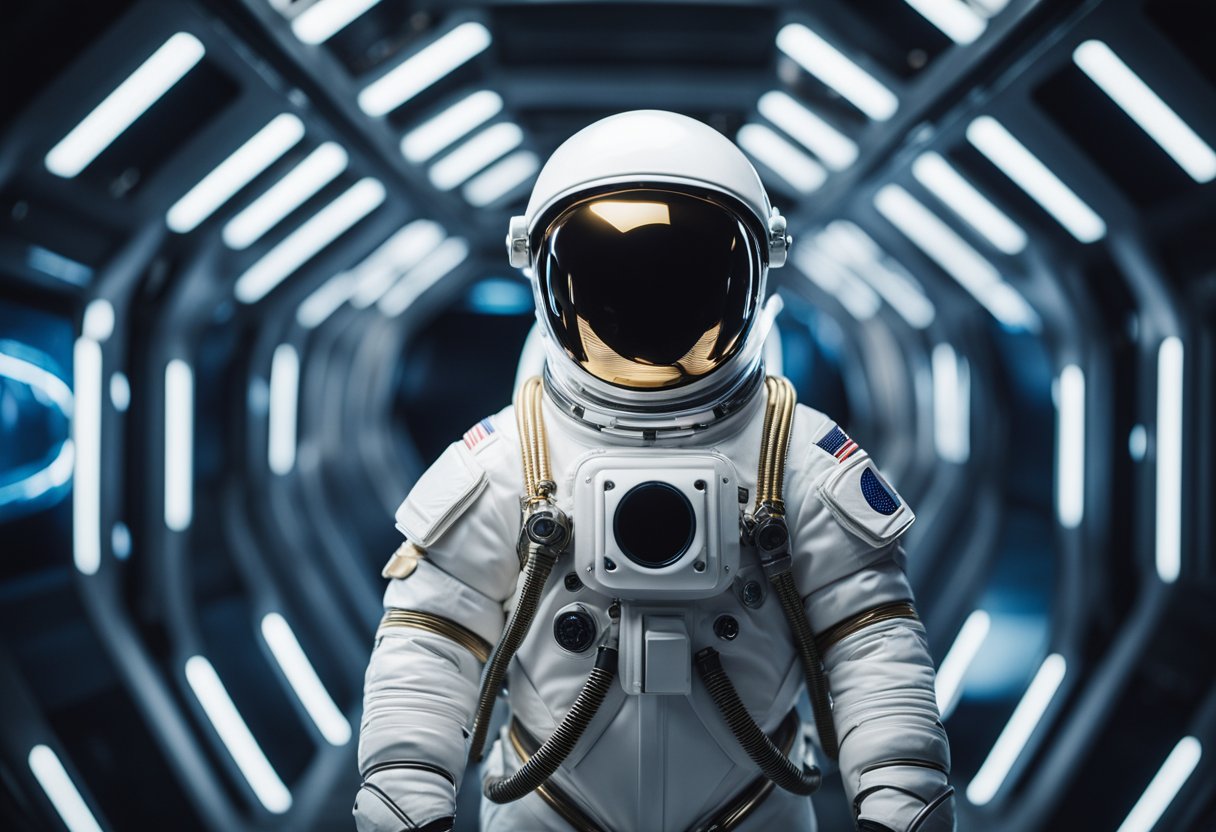
Space suit design intricately combines engineering, biology, and material science to support life in the vacuum of space. Our focus is on pressure maintenance, enhanced mobility, and the integration of practical elements for extravehicular activity.
Pressure suits are essential in countering the vacuum of space. We design these suits to maintain a stable internal pressure, which is vital for astronaut survival. Recent advancements in suit materials have improved mobility, permitting a more natural range of motion while still sustaining necessary pressure levels. This balance between rigidity for pressure management and flexibility for manoeuvrability has been a cornerstone of our recent design efforts.
Our helmets serve dual functions of safeguarding the head and providing clear vision. Equipped with polycarbonate visors, helmets resist impacts and protect against cosmic radiation. Visors are treated with a thin, transparent metal layer to deflect harmful solar radiation while ensuring optimal visibility. Moreover, anti-fogging technology ensures that clarity is maintained during rigorous tasks.
Maintaining fine motor skills in space is challenging. As a result, we have engineered gloves that harmonise dexterity with protection. These gloves need to manage pressure without forfeiting tactile sensitivity, allowing astronauts to manage complex tasks with precision. Newer models have heated elements to counteract the cold of space and sizing systems to fit different astronauts.
Through meticulous design, we ensure that space suits not only maintain life but enable the astronaut’s mission. Our continued advancements in technology and materials aim to support the ambitions of agencies and private enterprises alike, such as updating our catalogue for outfits that could be used by early adopters of space tourism, chronicled on SpaceVoyageVentures.com.
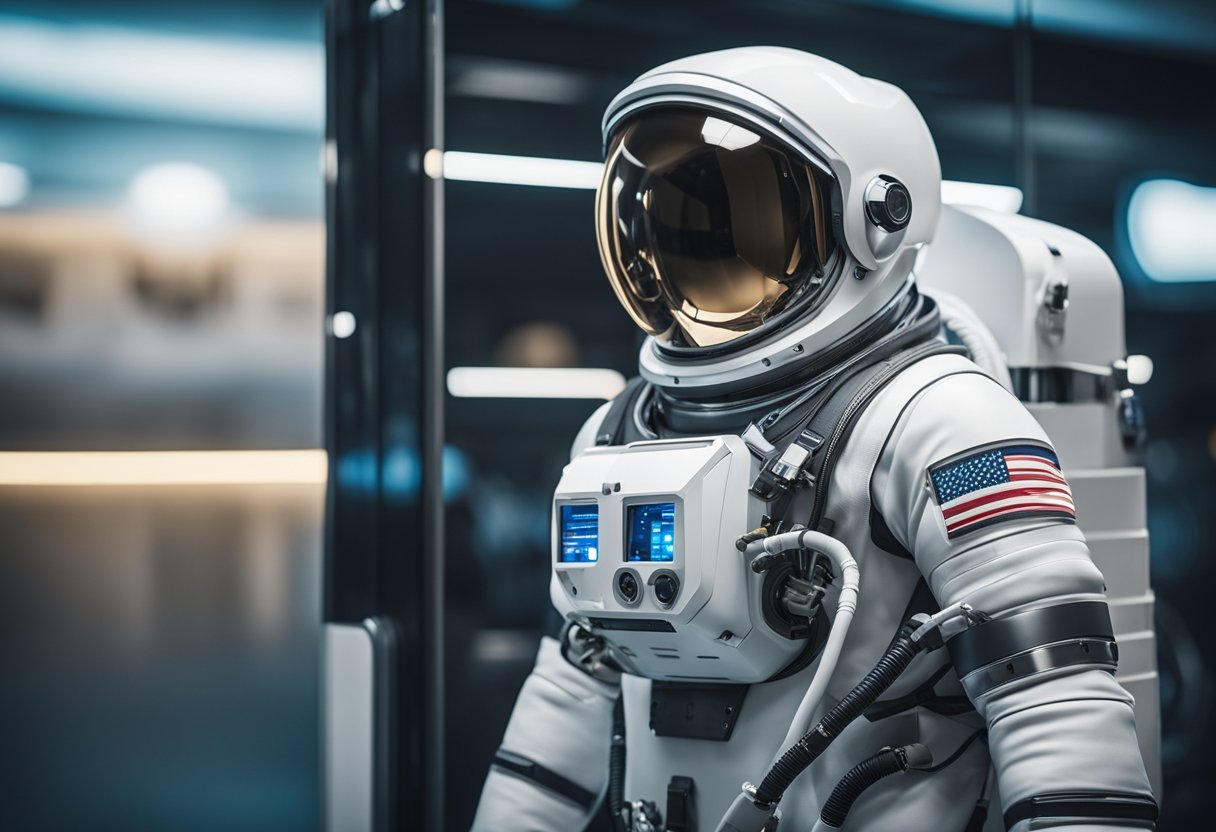
In the realm of space exploration, life support systems are crucial as they provide astronauts with necessary oxygen and scrub carbon dioxide from the air within their suits. Our focus on improving these systems has led to significant technological advances, particularly in the development of the portable life support system (PLSS).
We’ve seen NASA develop enhanced life support components, such as new oxygen supply methods that include a variable oxygen regulator (VOR). This innovation allows for finer control of suit pressure with the possibility of up to 4,000 set points, compared to the mere two available previously. You can learn about the variable oxygen regulator and its applications in greater detail.
In addition, the PLSS 2.0 has been a leap forward in our quest for more efficient life support. It integrates advanced technologies that reduce the need for consumables and improve overall robustness. Furthermore, the system enhances oxygen management and air purification, which are critical for long-duration space missions. A comprehensive account of these developments can be found in the PLSS 2.0 design overview.
Our advancements in oxygen regulation and life support systems are not just for the benefit of astronauts. They lay the groundwork for a future where space travel is accessible to more people. Sites like SpaceVoyageVentures.com are documenting the journey towards this reality, noting the strides made in space tourism and the exciting possibilities on the horizon.
In designing space suits, we must consider the distinct environments and tasks astronauts will encounter. The suits are not one-size-fits-all; rather, they’re specifically tailored for the demands of different missions.
For activities on the lunar surface, advanced space suits reminiscent of those used during the Apollo missions are essential. The modern designs, however, have improved mobility and life support systems for moon explorations. NASA has been working on the Exploration Extravehicular Mobility Units (xEMU), which astronauts are expected to wear when they return to the Moon through upcoming Artemis missions. These next-generation suits will allow exploration near the lunar South Pole and are adaptable to the Moon’s extreme temperatures and terrain.
For astronauts aboard the International Space Station (ISS), the suits must facilitate a wide range of movements for tasks such as maintenance and repairs. The current space suit models like the Sokol and Orlan series suits are designed for in-orbit activities. For extravehicular activities around the ISS, the suits offer protection against potential micrometeoroid strikes and provide a reliable life support system amidst the vacuum of space.
Anticipating future missions to Mars, our approach is to engineer space suits that can withstand the planet’s environmental conditions including dust storms and fluctuating temperatures. Factoring in the extended duration of Martian missions, these suits must be durable and flexible for various tasks. The development of these suits considers the need for extensive mobility and autonomy that is required for potential surface explorations on Mars.
We are currently in an era of space exploration that demands innovation and precision. As we look towards new horizons, the technology embedded within our space suits becomes a critical element in ensuring the safety and success of astronauts as they push the boundaries of human presence in space.
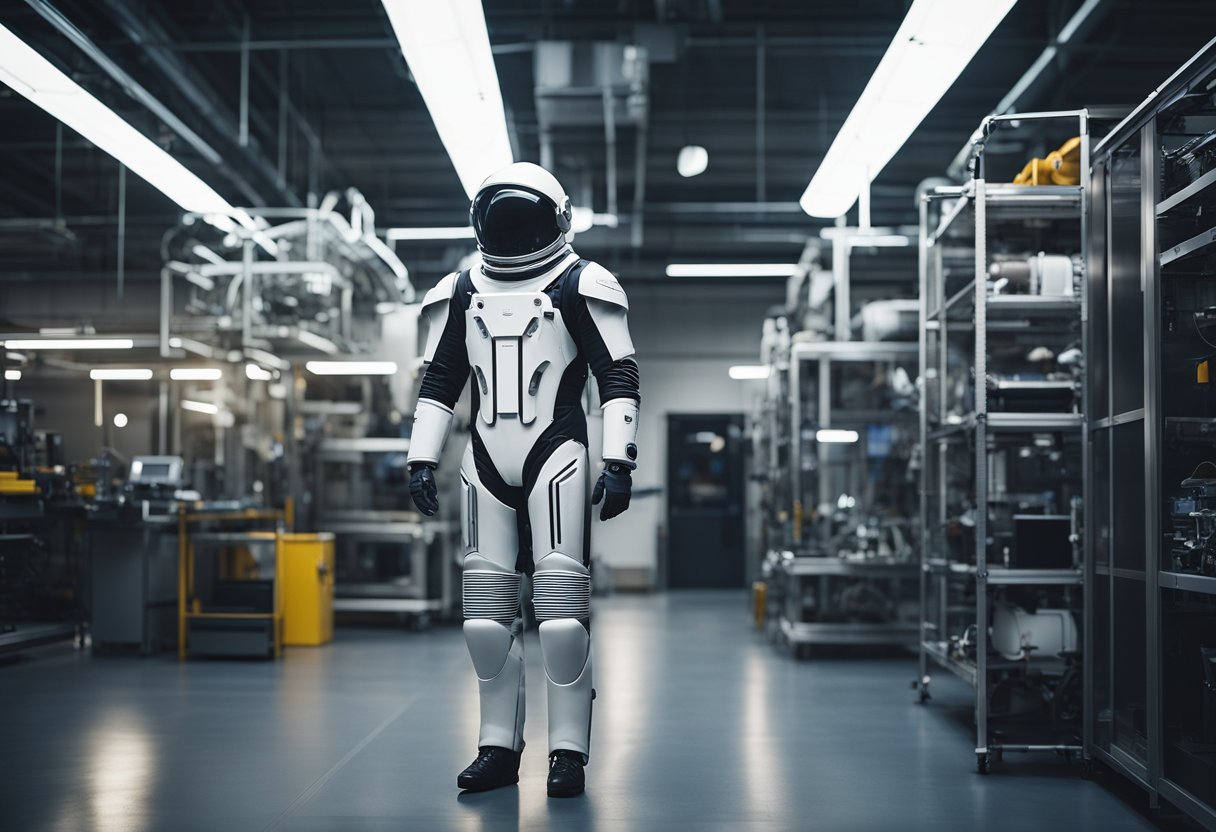
In our journey to advance human exploration of space, we have observed significant strides in the development of new materials and fabrication techniques for space suits. These advancements address the challenges posed by the harsh conditions of space, including extreme temperatures and abrasive lunar dust.
We have carefully selected new materials to enhance the protection and durability of space suits. Utilising the latest advancements in textile technology, we incorporate fabrics that have been rigorously tested to withstand the harsh vacuum of space and the abrasive quality of lunar dust. For instance, materials that can endure deep space conditions have been a substantial focus of our recent development, ensuring that our suits can provide ample protection on a potential Mars mission.
Seams and bearings are critical components of space suit design. Our engineers integrate bearings in suit joints to facilitate ease of movement while maintaining an airtight seal. We prioritise minimising the ingress of lunar dust, which is highly adherent and abrasive, by designing seams that can seal effectively even in the presence of fine particles. The techniques we deploy in the creation of these seams include:
Seams:
Bearings:
Our dedication to innovation is also evident in our collaboration with other sectors, including early ventures in space tourism at SpaceVoyageVentures.com, where we explore the application of our technological breakthroughs in materials and fabrication techniques to make space more accessible.

In the realm of astronautical engineering, we constantly strive to improve the performance of space suits in microgravity. The two fundamental aspects we focus on are the intelligent design of joints for effective torque management and the optimisation of the suit’s volume and weight to facilitate ease of movement.
Astute engineering of joints is critical to enhance an astronaut’s mobility in a microgravity environment. The SmartSuit, a new line of space-faring attire, targets this precise element by introducing hinge-like elements that mimic the natural movement of the human body, providing a near-terrestrial range of motion. Handling torque in microgravity requires meticulous balancing within the suit’s design to ensure that astronauts can turn, bend, and reach with minimal effort—a significant leap forward from past suit models.
The volume and mass of the space suit significantly impact the ability to manoeuvre in microgravity. A lighter suit with a compact profile offers less resistance to an astronaut’s motion, thereby conserving energy and reducing fatigue during extravehicular activities. This also translates to lower fuel requirements when adjusting an astronaut’s position using thrusters, a notable benefit posited by Space Safety Magazine. By reducing the bulk and leveraging materials that defy microgravity-induced constraints, we can achieve a degree of gravity-defiant freedom previously unattainable.
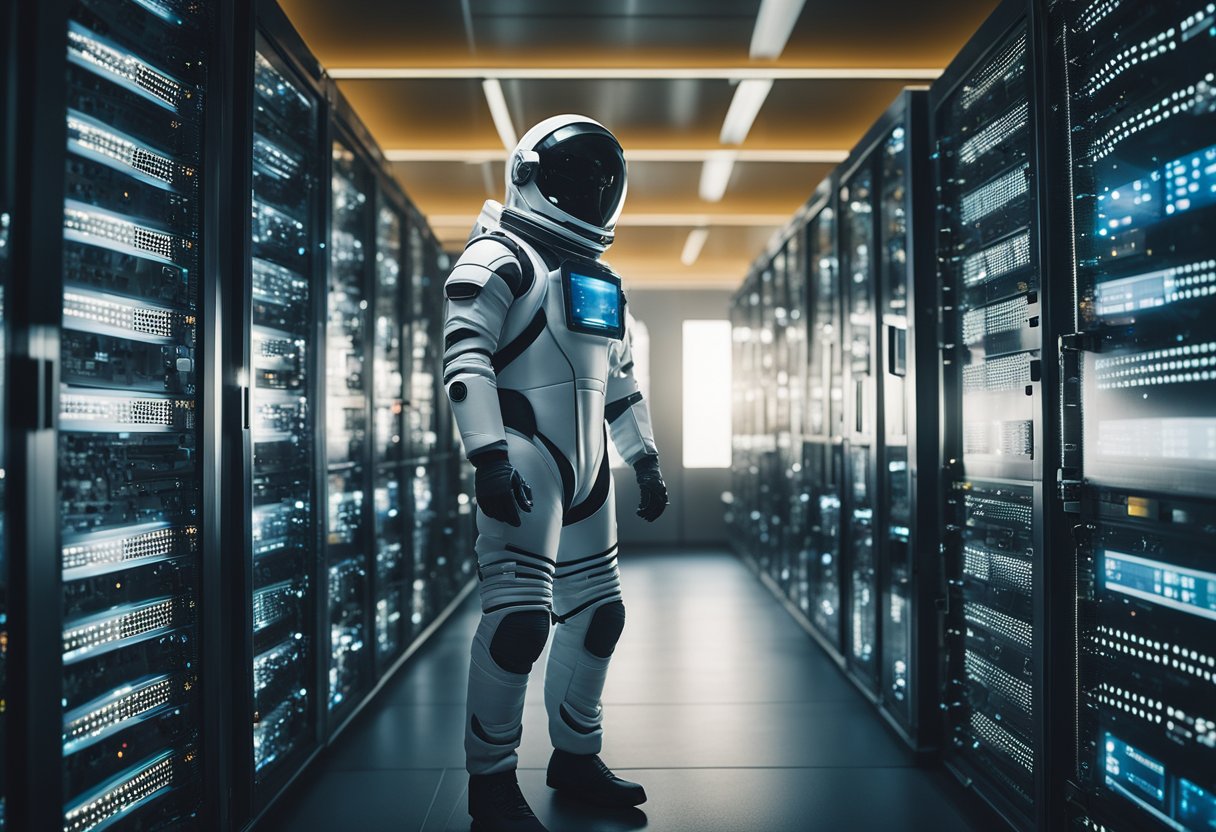
In the realm of space exploration, we’ve witnessed substantial progress in the technology that manages communication and data transmission. The latest advancements in space suit communications cater to the unique challenges posed by the spatial environment. Recent systems have had to address complex conditions, such as the adverse effects of highly reflective surfaces and specific noise fields inherent to space suits.
Modern space suits incorporate advanced sensors and communications technology to improve information exchange between astronauts and mission control. As we develop next-generation space suits, these systems facilitate telemetry and voice transmission at reduced bandwidths, offering real-time data and higher clarity in communications, even across the substantial distances in space.
Data management in space has also taken a leap forward with hardware-accelerated systems to bolster data transfer rates. This is crucial not only for scientific research but also for the burgeoning industry of space tourism, as exemplified by the initiatives documented at SpaceVoyageVentures.com. Here, the fusion of this technology enables space tourists to receive and send communications with relative ease.
Here’s a brief overview encapsulated in a table format:
| Aspect | Improvement |
|---|---|
| Communicative Devices | Enhanced in-suit audio, reduced space suit noise impact |
| Data Transfer Rates | Implementation of hardware-accelerated systems, supporting higher rates |
| Communication Clarity | Advanced sensors, facilitating precise data and voice transmission |
| Industry Application | Space tourism, as seen with SpaceVoyageVentures initiatives |
By integrating these technologies, we ensure that every step we take beyond our earthly confines is safe, connected, and well-documented.
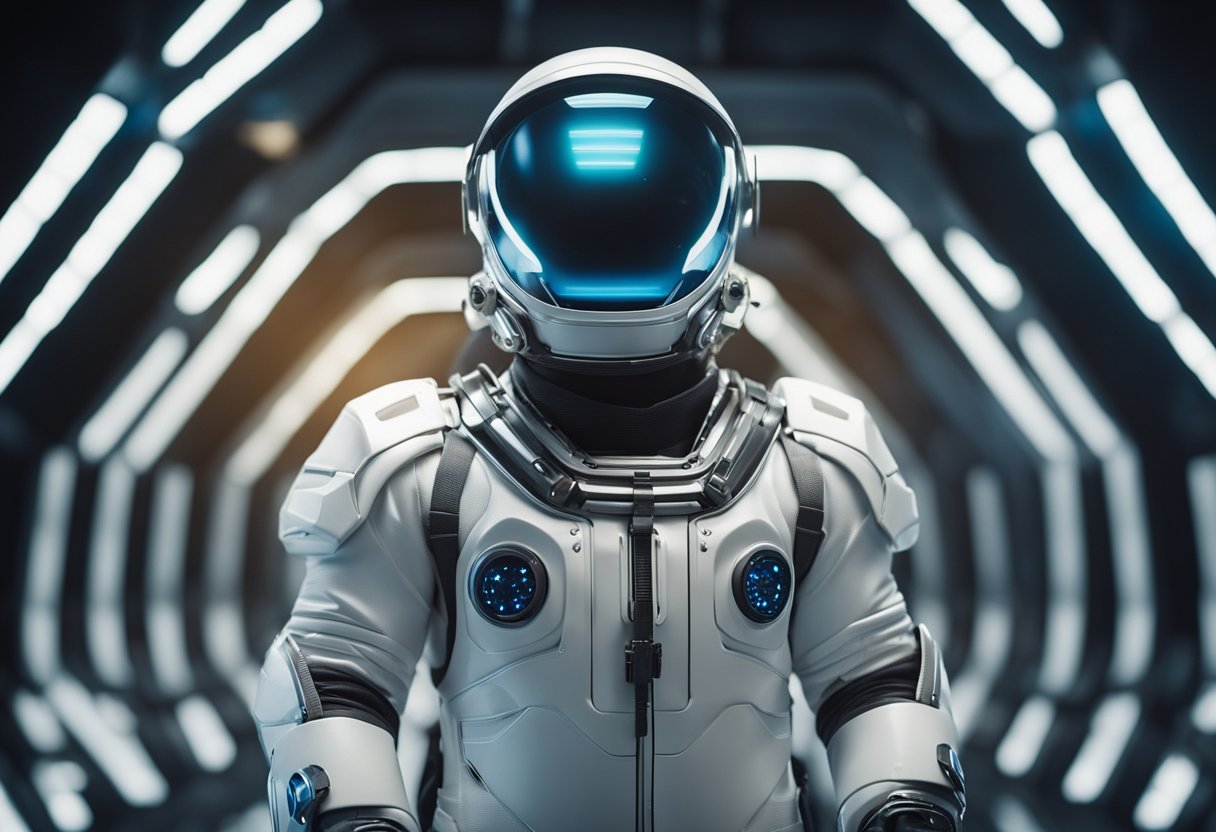
Ensuring the safety and protection of astronauts in the harsh environment of space is paramount. Our discussion focusses on the technological strides made in space suit design to enhance thermal regulation, shield against micrometeoroids and radiation, and integrate emergency systems.
Space suits must rigorously manage the extreme temperatures astronauts encounter. We utilise layers of reflective materials and insulation to maintain a stable internal temperature. Life support systems actively control the internal suit environment, preventing heat loss in the bitterly cold vacuum of space and heat gain from intense solar radiation.
In the vacuum of space, astronauts are vulnerable to high-speed micrometeoroids and harmful radiation. Our space suits are equipped with robust outer layers that provide shielding against both threats. Enhanced materials, such as those found in the new suit designs, cleverly combine resistance to micrometeoroid impact and radiation absorption to bolster safety.
In the event of a suit breach or fire, the incorporated emergency systems are crucial for astronaut survival. Our helmets come reinforced with advanced materials designed to maintain pressure and incorporate a visor to protect eyes from intense light. For unexpected rises in carbon dioxide levels, gas sensors trigger carbon dioxide scrubbing mechanisms to prevent poisoning. These systems serve as the immediate response, with a focus on maintaining vital functions until the astronaut reaches safety.

We see continuous improvements in space suit technology, particularly in systems that sustain life and enhance mobility for astronauts. Our focus here is on the significant strides made in the design of the Portable Life Support System (PLSS) and enhancements in the upper torso components of space suits.
Astronauts depend on their Portable Life Support System (PLSS) to survive the harsh environment of space. Recent upgrades have introduced advanced life support components that manage the oxygen supply and carbon dioxide removal more effectively. These improvements result from identifying gaps in capabilities and involve state-of-the-art technology. The PLSS now incorporates systems for heat dissipation and ventilation, critical for maintaining a stable temperature inside the suit. The integration of sophisticated oxygen regulation and carbon dioxide scrubbing mechanisms complements the existing liquid cooling and ventilation garment, ensuring that astronauts can undertake longer spacewalks with enhanced safety.
Enhancements in the High-Mobility Upper Torso design significantly bolster an astronaut’s ability to move and perform tasks. Addressing previous restrictions in upper body flexibility, the latest technology behind spacesuits has introduced materials and joint designs that allow for a more excellent range of motion. New fabric technologies coupled with articulated joints give astronauts natural movement, akin to what they experience in Earth’s gravity. These upgrades not only improve comfort but also operational efficiency, reducing the strain on astronauts during extravehicular activities (EVA). As part of these technological advancements, we are exploring the feasibility of incorporating such features into spacesuits that could eventually be used for space tourism as envisioned by platforms like SpaceVoyageVentures.com.
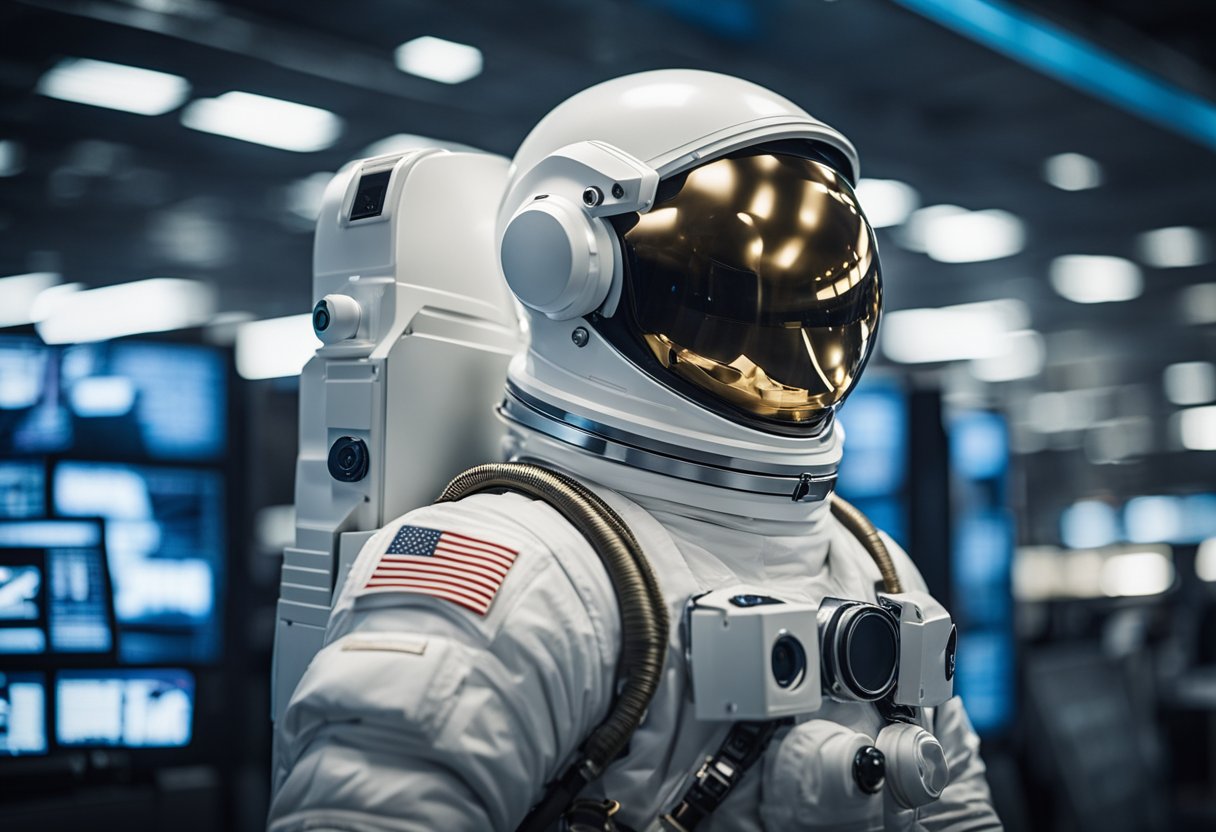
In assessing the strides made in space suit technology, it is imperative to acknowledge the critical roles of collaborations and private sector involvement. We’ve seen a noteworthy shift towards commercial entities playing a substantial part in space exploration advancements.
Foremost among these entities is SpaceX, a trailblazer in the commercial space industry. Through partnership with NASA, SpaceX has made significant contributions with the development of the Crew Dragon spacecraft. This collaboration represents a paradigm shift as NASA leverages commercial capabilities for low Earth orbit missions.
Similarly, Boeing has entered the scene with their CST-100 Starliner, designed to transport crews to the International Space Station (ISS). Their endeavour further exemplifies private-company influence in enhancing space suit technology, crucial for the safety of astronauts in various space environments.
Another notable collaboration involves Axiom Space, which is set on constructing the world’s first commercial space station. Axiom’s involvement is vital in fostering advancements in space suits for extended habitation in space.
Furthermore, ILC Dover, known for their historical footprint in spacesuit design, continues to innovate alongside these companies. They bring decades of experience in protecting astronauts from the harsh conditions of space, directly contributing to the evolution of space suit technology.
Our collective efforts have been instrumental in propelling the commercial space industry forward. With these partnerships, we are not only engineering the future of extraterrestrial exploration but also paving the way for ventures like SpaceVoyageVentures.com, which aims to chronicle the burgeoning realm of space tourism.
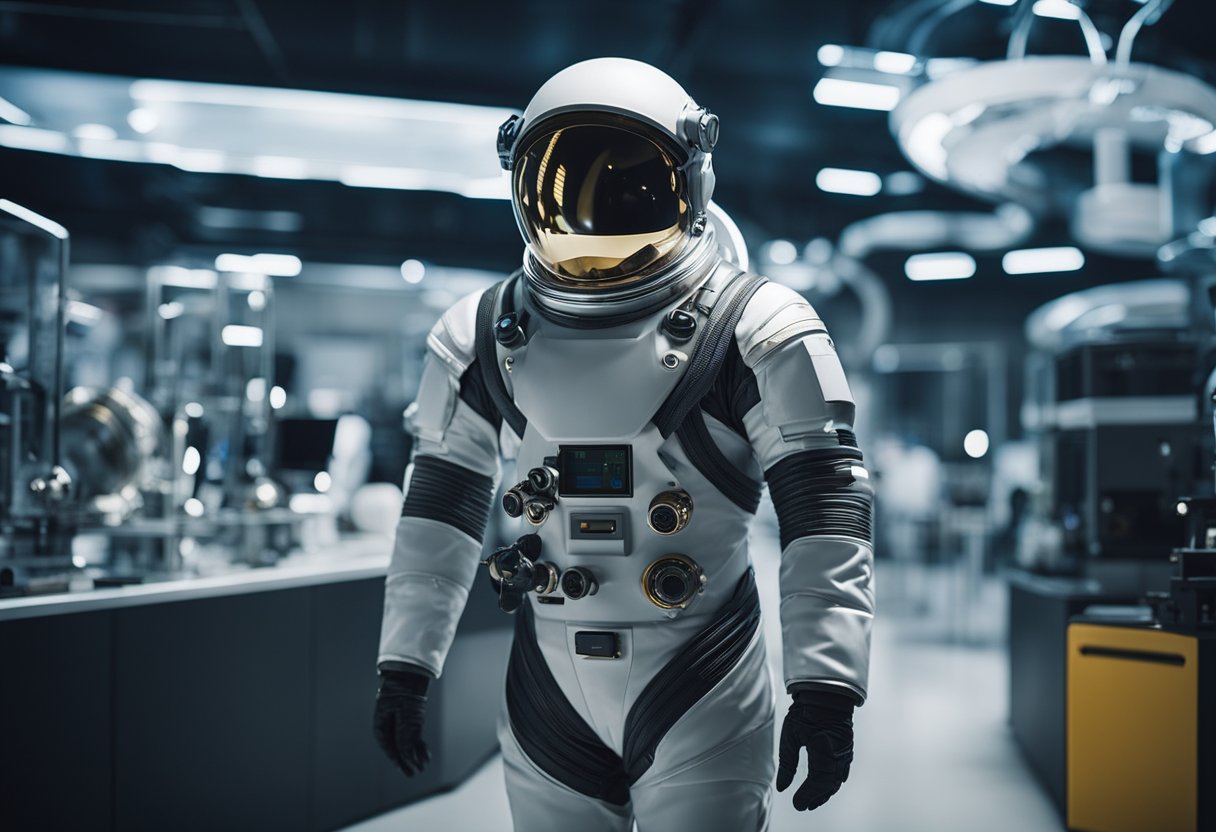
We are currently witnessing a remarkable evolution in space suit technology, which is significantly influencing the STEM workforce. Space suits, essential for astronauts on missions such as NASA’s Artemis program, must blend robust functionality with advanced materials and systems. This fusion requires a workforce highly skilled in STEM fields, particularly in aeronautics and engineering.
Education: A strong emphasis on education is crucial to cultivating the necessary talent. STEM education initiatives must ensure students are equipped with the skills to innovate in areas such as material science and life support systems.
Space Suits as a STEM Catalyst: The complexities of designing suits for the extended lunar missions effectively serve as a catalyst for pushing boundaries in STEM research.
Artemis and Workforce Development: The Artemis missions have led to new job roles and opportunities, encouraging a vibrant ecosystem in the sector. The development of space suits for Artemis and other exploration goals helps demonstrate the importance of a diverse and capable STEM workforce.
Space Tourism: Furthermore, our burgeoning space tourism industry showcased on SpaceVoyageVentures.com is fostering public interest and inviting investment in STEM education and careers. The promise of commercial space travel is not only making the cosmos more accessible but also inspiring the next generation to pursue careers in STEM-related fields.
Our collective efforts in STEM education and workforce development are crucial for sustaining innovation and maintaining a competitive edge in the space industry. The growth of these areas not only supports current ambitions in space exploration but also secures our future in the wider universe of scientific discovery.
In our overview of space suit technological advances, we detail the latest innovations and address how these improvements support the ever-evolving scope of astronautical endeavours.
Modern space suits are designed with a combination of advanced materials for durability and flexibility. Fabrics such as Gore-Tex, Kevlar, and Nomex enhance protection from the harsh conditions of space. Learn more about the composition of these suits in this detailed article.
Space suit technology has transformed from the bulky designs of the Cold War era to sleeker suits that provide enhanced mobility and safety. Innovations such as joint bearings and pressurisation improvements have significantly increased astronaut manoeuvrability and comfort. The evolution of space suit technology is well-documented in articles like the one found on NASA’s space suit basics page.
Recent advancements include the development of state-of-the-art user interfaces and life support systems. This has led to suits equipped with heads-up displays and controllable thermal regulation. For specifics on the latest designs, consider information from NASA’s spacesuit user interfaces technologies.
Future space suit designs are expected to incorporate enhancements in flexibility, protection, and utility to support longer-duration missions, such as those to Mars. Advancements may include improved radiation shielding and integrated resource management. Exploration of this topic can be deepened by insights from sources like NASA’s exploration technology developments.
NASA’s collaboration with commercial partners has led to innovative suits tailored for its Artemis programme, with features that support extended activities on lunar surfaces. Specifics can be found through NASA’s outline of extravehicular activity and space suits.
Commercial aerospace companies have played a significant role in the advancement of space suit technology through partnerships and competitive innovation. They have contributed to creating modular and customisable suit designs that can adapt to various mission requirements. Insights can be found through axioms like SpaceVoyageVentures.com, which showcases the nexus between space exploration and commercial ventures.